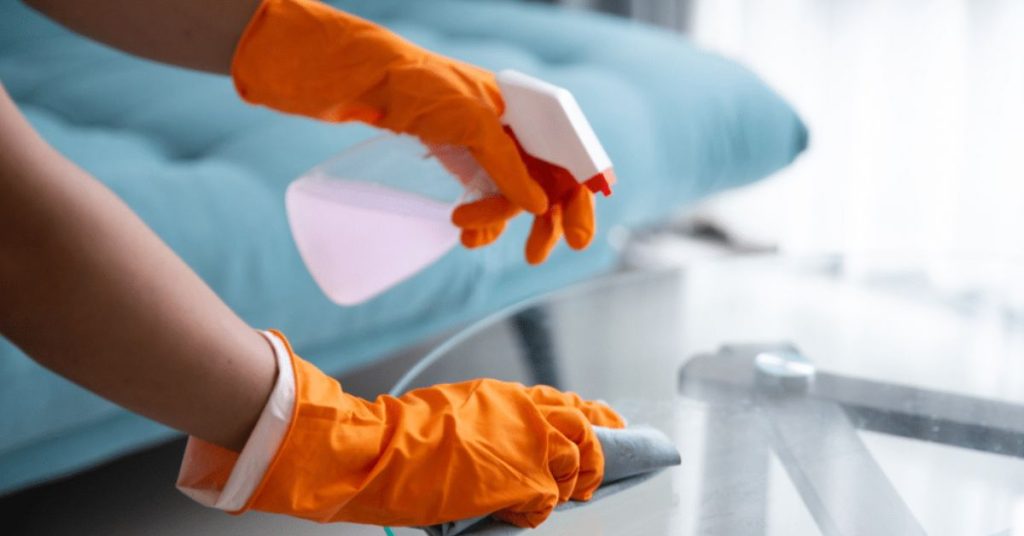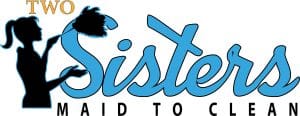Disinfecting our homes has become a top priority for many, especially as we strive to keep our families healthy and safe. However, while it’s important to eliminate germs and bacteria, it’s equally crucial to protect the surfaces in our homes from unnecessary wear and tear. The wrong cleaning methods or products can leave scratches, dull finishes, or even permanent damage. The good news? With the right approach, you can achieve a truly deep cleaning without sacrificing the beauty or longevity of your home’s surfaces.

In this comprehensive guide, you’ll discover how to disinfect effectively and safely, learn which products to use (and which to avoid), and pick up expert tips from cleaning professionals. Whether you’re tackling kitchen counters, bathroom fixtures, or delicate electronics, these strategies will help you maintain a spotless, healthy home—without the risk of damage.
Why Surface-Safe Disinfection Matters
Disinfecting is more than just wiping away visible dirt. It involves using products that kill bacteria, viruses, and other pathogens. But not all disinfectants are created equal, and not all surfaces react the same way to cleaning agents. For example, harsh chemicals can strip the finish from wood, cloud the shine of stainless steel, or etch the surface of natural stone.
Surface-safe disinfection is about striking the right balance: eliminating harmful germs while preserving the integrity and appearance of your home’s materials. This approach not only keeps your space looking its best but also extends the life of your furniture, appliances, and fixtures.
Know Your Surfaces
Before you reach for a disinfectant, take a moment to identify the surfaces you’ll be cleaning. Each material has its own needs and vulnerabilities:
- Wood: Prone to water damage and discoloration from harsh chemicals.
- Granite and Marble: Sensitive to acids and abrasive cleaners, which can cause etching.
- Stainless Steel: Susceptible to streaks and corrosion if cleaned with chlorine-based products.
- Glass: Can be scratched by abrasive pads or clouded by certain cleaners.
- Electronics: Easily damaged by moisture and strong solvents.
- Plastic and Laminates: Can warp or discolor if exposed to strong chemicals.
Understanding these differences is the first step toward safe and effective deep cleaning.
The Golden Rules of Disinfecting Without Damage
1. Read Labels Carefully
Always check the manufacturer’s instructions on both your cleaning products and the surfaces themselves. Many surfaces, especially natural stone and specialty finishes, come with specific care guidelines. Cleaning professionals recommend keeping a list of these instructions handy for reference.
2. Test in an Inconspicuous Area
Before using a new disinfectant or cleaning method, test it on a small, hidden spot. Wait a few minutes to ensure there’s no discoloration, residue, or damage before proceeding.
3. Use the Right Tools
Soft microfiber cloths, non-abrasive sponges, and gentle brushes are your best friends. Avoid steel wool, rough scrubbers, or anything that could scratch or dull the surface.
4. Dilute When Necessary
Many disinfectants are highly concentrated. Diluting them according to the label not only protects your surfaces but also ensures safe, effective cleaning.
5. Don’t Overdo It
More isn’t always better. Excessive scrubbing or using too much product can cause buildup or wear down finishes. Stick to the recommended amounts and techniques.
Choosing the Right Disinfectant
Not all disinfectants are suitable for every surface. Here’s a quick guide to help you choose wisely:
For Hard, Non-Porous Surfaces
- Bleach Solutions: Effective for disinfecting but can damage wood, stone, and some metals. Use only on surfaces like tile or sealed countertops, and always rinse thoroughly.
- Hydrogen Peroxide: A gentler alternative that works well on many surfaces. Avoid prolonged contact with fabrics or unsealed wood.
- Alcohol-Based Cleaners (at least 70% isopropyl): Great for electronics and glass. Evaporates quickly and leaves minimal residue.
- Quaternary Ammonium Compounds (“Quats”): Found in many commercial disinfectants. Generally safe for most surfaces but check labels for compatibility.
For Delicate or Porous Surfaces
- Mild Soap and Water: Often the safest option for wood, stone, and painted surfaces. While not a disinfectant, it removes dirt and some germs without risk of damage.
- Specialty Cleaners: Many brands offer disinfectants formulated specifically for wood, stone, or stainless steel. These are worth the investment for deep cleaning.
Step-by-Step: Disinfecting Common Household Surfaces
1. Kitchen Counters (Granite, Quartz, Laminate)
- Remove crumbs and debris with a dry cloth.
- Clean with mild soap and water to remove grease and grime.
- Disinfect with a compatible product: For granite or marble, use a stone-safe disinfectant. For laminate, diluted bleach or hydrogen peroxide is usually safe.
- Wipe dry with a microfiber cloth to prevent streaks or water spots.
2. Bathroom Fixtures (Porcelain, Chrome, Glass)
- Wipe down surfaces with a damp cloth to remove visible dirt.
- Apply disinfectant: Use a bathroom-safe spray or diluted bleach for sinks and toilets. For chrome and glass, opt for alcohol-based cleaners.
- Rinse and dry: Always rinse bleach or strong chemicals off metal to prevent corrosion.
3. Wood Furniture and Floors
- Dust regularly with a dry microfiber cloth.
- Clean with a damp (not wet) cloth and a small amount of mild soap.
- Disinfect with care: Use a wood-safe disinfectant or a solution of 70% isopropyl alcohol and water. Avoid soaking the wood.
- Dry immediately to prevent water damage.
4. Electronics (Phones, Tablets, Remotes)
- Unplug or power down devices before cleaning.
- Wipe with a soft, lint-free cloth slightly dampened with 70% isopropyl alcohol.
- Avoid excess moisture and never spray cleaner directly onto electronics.
5. Stainless Steel Appliances
- Wipe with a damp microfiber cloth to remove fingerprints.
- Disinfect with alcohol-based cleaner or a stainless steel-safe disinfectant.
- Buff dry to restore shine and prevent streaks.
Deep Cleaning Tips from the Pros
Cleaning professionals know that deep cleaning is about more than just surface-level shine. Here are some of their top tips for disinfecting without damage:
- Work in sections: Focus on small areas at a time to ensure thorough cleaning and prevent products from drying out or leaving residue.
- Ventilate the area: Open windows or use fans when using strong disinfectants to protect both your surfaces and your health.
- Rotate products: Don’t use the same cleaner for every job. Match the product to the surface for the best results.
- Schedule regular deep cleaning: Set aside time each month for a more intensive clean. This prevents buildup and keeps surfaces in top condition.
Common Mistakes to Avoid
Even with the best intentions, it’s easy to make mistakes that can damage your home’s surfaces. Here are a few pitfalls to watch out for:
- Using vinegar or lemon on stone: These acids can etch and dull granite, marble, and other natural stones.
- Mixing cleaning products: Combining bleach and ammonia, for example, creates toxic fumes and can damage surfaces.
- Ignoring dwell time: Disinfectants need time to work. Follow the label instructions for how long to leave the product on the surface before wiping.
- Skipping the rinse: Some disinfectants leave residues that can attract dirt or cause discoloration. Always rinse and dry as directed.
When to Call in Cleaning Professionals
Sometimes, the safest and most effective way to disinfect your home is to bring in cleaning professionals. They have access to commercial-grade products and equipment, as well as the expertise to handle delicate surfaces. If you’re unsure about how to clean a particular material, or if you want a truly deep cleaning, professional help is a wise investment.
Professional cleaners can also spot potential issues—like worn finishes or hidden mold—that you might miss. Their services are especially valuable for high-traffic areas, homes with young children or pets, or anyone with allergies or sensitivities.
Eco-Friendly and Surface-Safe Alternatives
If you prefer a greener approach, there are plenty of eco-friendly disinfectants that are gentle on surfaces. Look for products with EPA approval for effectiveness against germs, but free from harsh chemicals. Ingredients like hydrogen peroxide, citric acid, and thymol (from thyme oil) are effective and less likely to cause damage.
DIY options, such as a solution of 70% isopropyl alcohol and water, can also be safe and effective for many surfaces. Just remember to test first and avoid using homemade cleaners on sensitive materials like natural stone or unfinished wood.
Final Thoughts
Disinfecting your home doesn’t have to mean sacrificing the beauty or longevity of your surfaces. With a little knowledge and the right approach, you can achieve a deep cleaning that’s both effective and gentle. Take the time to understand your home’s materials, choose the right products, and follow best practices for safe disinfection.
And remember, when in doubt, don’t hesitate to consult cleaning professionals. Their expertise ensures that every surface in your home is not only germ-free but also protected for years to come. By combining smart cleaning habits with a thoughtful approach, you’ll create a home that’s both healthy and beautifully maintained—inside and out.
About The Author
Two Sisters Maid To Clean offers top-tier house cleaning services in Nashville and Murfreesboro, TN, ensuring a pristine home for you and your family. We provide residential cleaning, small office cleaning, laundry and light cleaning, as well as post-construction cleaning services.
